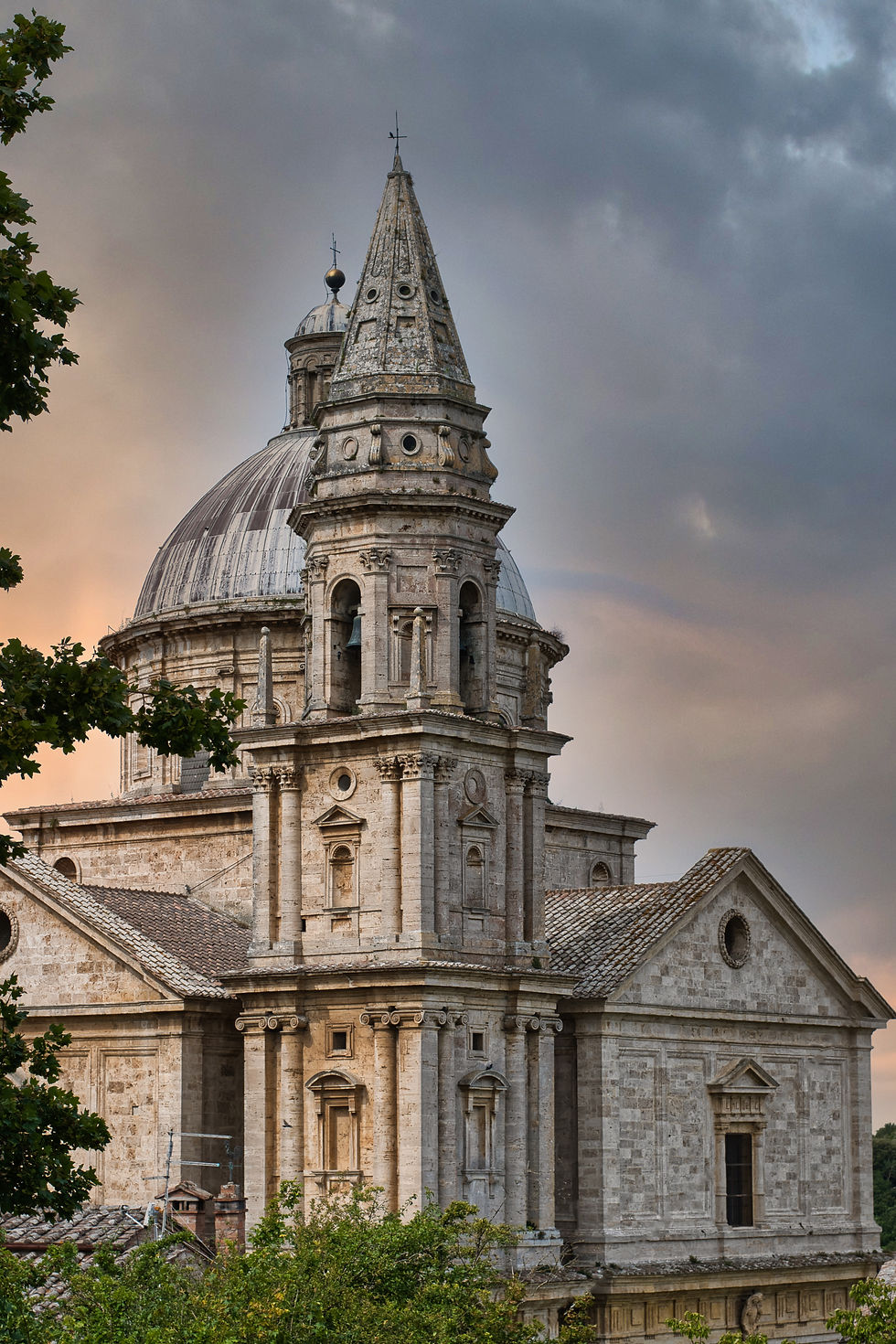Montepulciano
Montepulciano
To the south of Siena is that picture-perfect landscape that everyone thinks of when Tuscany is mentioned, those gently rolling hills studded with cypress and olive trees and, in the midst of this most picturesque scenery, is a series of charming hilltop towns. For me the most beautiful and interesting of these is Montepulciano. The town gives its name to the famous Vino Nobile produced from local grapes but there is so much more to experience and a day spent in Montepulciano is always rewarding. A word of warning though - the town is not really suitable for people who have mobility issues.
On a site that has its roots in the pre-Roman Etruscan civilization, the town sits proudly atop its steep-sided hill. The main gate is on the north side of town but parking there is very limited so it is probably better to leave your car in the large car park near the bus station in Piazza Pietro Nenni and use the two lifts that take you to the gardens. It is then just a short stroll to the 16th century gateway that leads into the centro storico. Follow the road to the column and then bear to the right. On the right is the Palazzo Bucelli. Embedded in the walls of this grand building are numerous stone fragments dating back to Etruscan and Roman times and so here you can see examples of the long-defunct Etruscan language that uses characters similar to Greek and reads from right to left.

Further up the street is the clock tower topped with the famous automaton of Pulcinella that is tasked with striking the hours. Pulcinella is a character from Neapolitan popular culture dating back to the 17th century.
Take your time and visit the many interesting shops along the route. Florence is famed for its leather products and Montepulciano is no slouch either when it comes to quality leather goods. Montepulciano is blessed with some very interesting little shops and it’s definitely worth browsing in them as you make your way up to the main piazza.

Continuing uphill brings you to the Arco della Cavina, an archway dating back to the middle of the 12th century. It was built over the remains of Etruscan tombs from the 5th century BC and traces of these can be seen inside the shop Porta della Cavina.
Turning right and then immediately left follow the road uphill. At the San Francesco art gallery turn right and within a few metres enjoy a breathtaking panorama over the Val di Chiana. Backtracking, continue uphill to arrive at the magnificent Piazza Grande. This spectacular square is the physical and political centre of the town and is dominated by the town hall. If it looks vaguely familiar then that is because it is a miniature version of the Palazzo Vecchio in Florence and was the work of the Medicis’ architect Michelozzo in the 15th century remodelling the original 13th century edifice. My favourite building in the square is the Palazzo Nobili Tarugi. Currently dated to the early 16th century, it is a beautiful example of high renaissance domestic architecture.

After such a long and steep walk the piazza is a natural place to pause and have a quick cool drink or a gelato. If, after this, you look around then you may be disappointed in the very ordinary and facade-less cathedral - in that case, walk downhill along Via San Donato to arrive at the simply wonderful Tempio di San Biagio, designed by Anthony Sangallo the Elder and constructed between 1518 and 1545 using the Greek cross floor plan. This is the same plan that Bramante used for his original design for the new St. Peter’s in Rome. The exterior of this church is beautifully proportioned and built in honey coloured Tuscan limestone. Walk all around it to fully appreciate its grandeur while at the same time breathing in the lovely view of the Chiana Valley.
If you have the energy, walk along the avenue of old cypress trees leading from the Tempio di San Biagio towards the main road. The Italians have a rather beautiful tradition of planting trees in memory of their soldiers who fell in battle and under each of the cypress trees you will find a stone commemorating a fallen soldier from the Great War.

Wander back into Montepulciano all the while reflecting gently on the meaning of life before making your way to a local restaurant where you can relax and enjoy a glass of the Vino Nobile di Montepulciano with a leisurely lunch.








